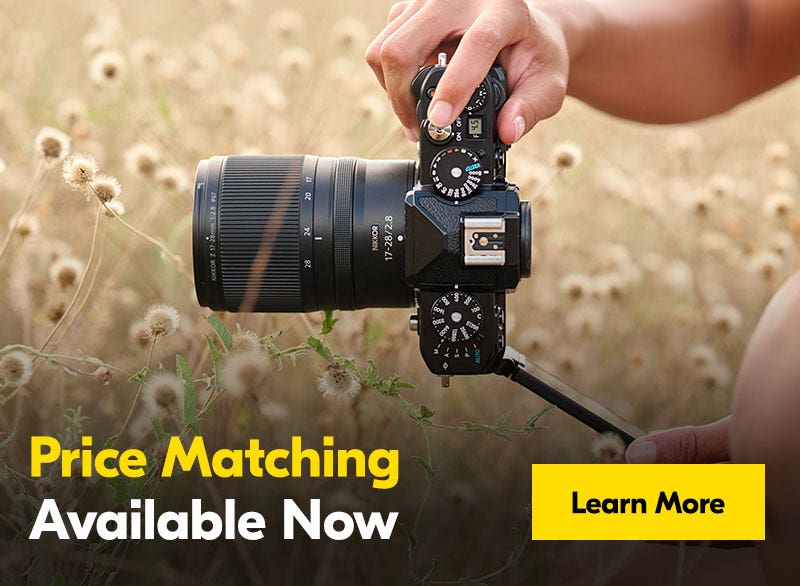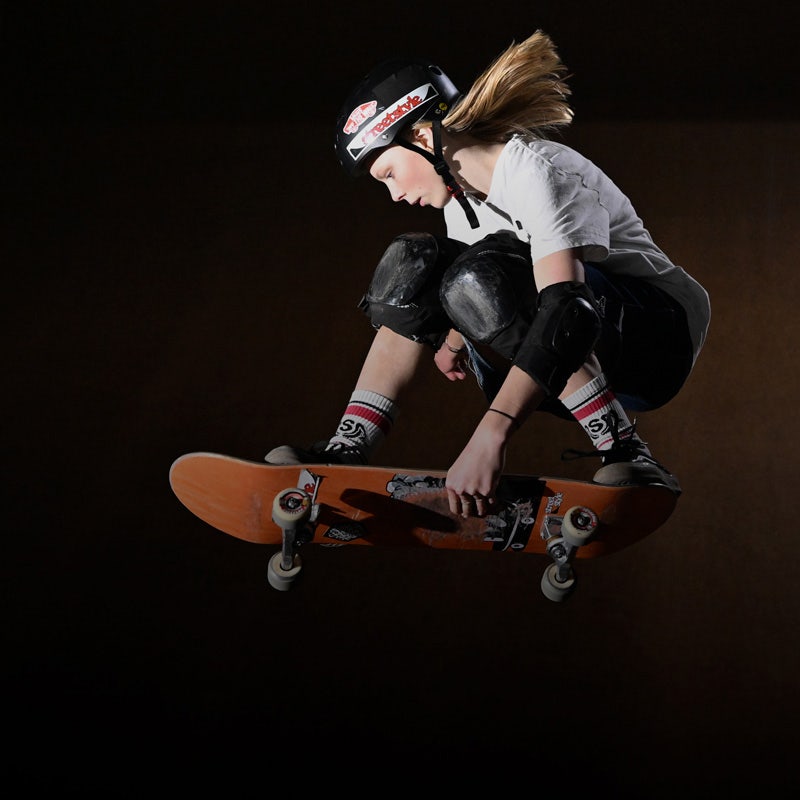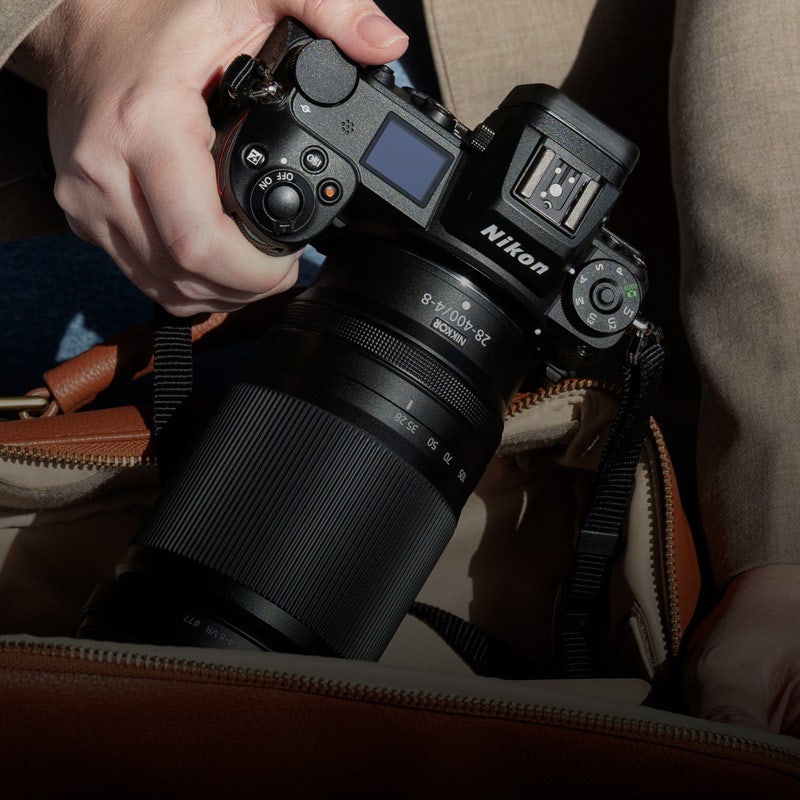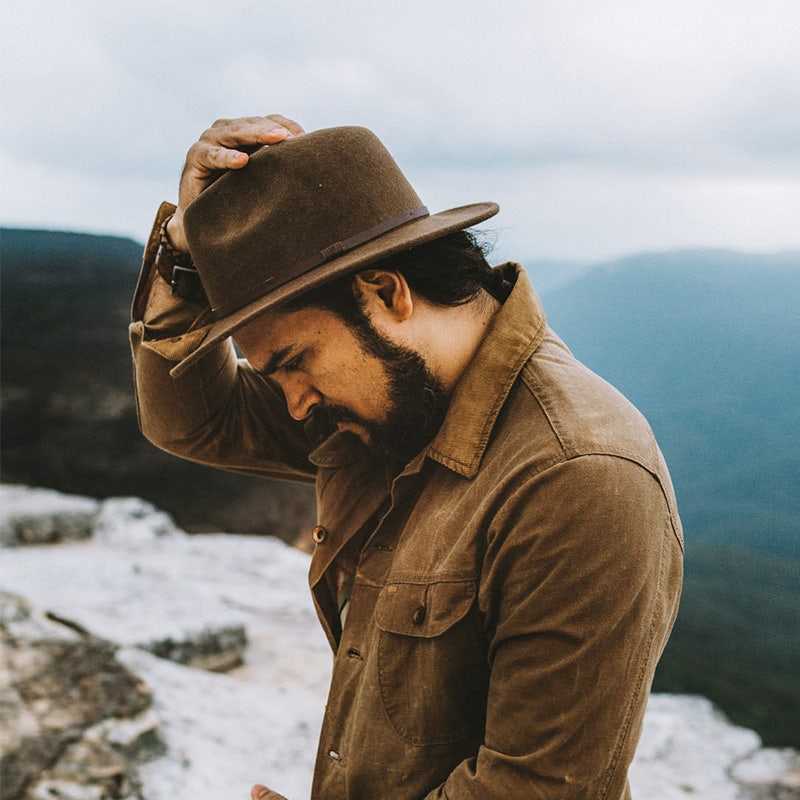For South Australia’s Steven Morris, astrophotography is not only what lifts him up, but what brings him back down to earth.


If you ever needed inspiration to follow your passions, know that it was only seven years ago that Steven Morris first picked up a professional-grade camera. In that short period, the Adelaide-based photographer has become one of astro’s sharpest stars (and yes, that is a pun that will make more sense once you read on), traversing the subdisciplines of deep space, nightscape and panoramic photography.
In 2018, Steven submitted 12 awe-inspiring nightscape images to the prestigious Epson International Pano Awards and was recognised with not only one gong, but 11. The following year, Steven’s now-renowned panoramic image entitled “Reach Out” took out the top honour in the nightscape category at the 2019 David Malin Awards.
Now inspiring both online audiences and Nikon School students, Steven continues to grow his arsenal of equipment and refine his skillsets in order to push the limits of what’s possible within the frame. He balances the enviable technical prowess required to excel at astrophotography with a profound connection to the mysteries of the universe.
We sat down with Steven to find out more about that balance.
How did you get started in photography?
It was 2014. I was feeling pretty down with what was happening with work. I started going into a depression and needed to get myself out of it. I remembered that when I was younger, I used to enjoy stargazing. And now I was in a position where I could afford a much better telescope than the real cheap-and-nasty one I had many, many years ago.
I went out and bought a computerised telescope, so I could just punch in what I wanted to look at —Saturn, Jupiter, Orion, whatever— could go to it, and know exactly what I was looking at… rather than me using one of those old telescopes and saying “oh, there’s a blob there, what’s that meant to be?”
The moment I started looking through that new telescope and saw star clusters or planets for the first time, I was blown away. Then I read that you could connect a camera up to it, so I did a bit of research into what to do there. I borrowed my Dad’s camera, then ended up buying my own – a Nikon D5100, from memory. After I connected that up and pointed it at the Trifid Nebula and took my first 30-second exposure of that… as soon as I saw the picture on the back of the screen I was just amazed by the colours and everything. My brother was living with me at the time and I remember yelling out “NASA has got nothing on me right now”.
That was it. From that point on, I was hooked on astrophotography. Every night, it didn’t matter if the moon was out, I was out there trying to capture photos of space.


Image by Steven Morris
Can you tell us a bit about your journey from then to where you are now?
From then on, I just kept shooting images of deep space. Plenty of sleepless nights, indeed, trying to work out exactly how to improve my images. I’ve always been a person that tries to self-teach and learn how to do things myself through understanding, rather than look everything up.
One of the nights, I was lying in bed and I had the thought: okay, this is all just light, that I’m capturing… what’s behind the concept of capturing light? How can I capture more light and more detail? When I wasn’t photographing at night, I was still being kept up all night by my own mind thinking how can I improve things more and more?
And then I got to the point where I thought: hmm, I wonder if I can shoot some nightscapes? So, I did a little bit of reading and then around that time, after sharing one of my deep space images on a Facebook group that went absolutely crazy, I was contacted by a guy who said “maybe you should go out and get the NIKKOR 14-24mm f/2.8”. I ended up buying it and shot my first nightscape, which went pretty well. From then on, I was also hooked on shooting nightscape images.
Not long after that, I saw an image by New Zealand’s Paul Wilson, who shot a lot of panoramic Milky Way shots. I reached out to him and asked how he went about shooting his shots, which led me to go out and take my first panoramic image with a 50mm lens. So, I went from easy, wide-angle one-shots to joining together 60-odd photographs.
And these days, do you shoot more deep space or nightscape?
That’s a difficult one to answer [thinks]. I started to get a little bit drained, I guess you could say. I wanted to go back to where my passion was, which was deep space – and that’s why I invested in my big telescope, here…
[At this point, Steven eagerly moves aside to reveal a telescope, then produces another from out of frame].
I run two of them, side by side, with two different types of cameras.
You did say that you stargazed in your youth, but have you ever articulated to yourself what attracts you to space?
[Thinks deeply] I guess it’s that… I feel peace. [Nods to himself] Yeah, I just feel peace. Whenever I go out and image and just lie there and stare up at space, it’s my way of getting away from everything. I think about what’s up there and get real deep in thought. Like, how did we even come about? If we’re just this little speck of all these amazing things that are happening out there, then what are we really? Then you think about the big bang and that we are, in a way, what people say – stardust. We all have evolved from what’s out there in space and we don’t really know a lot about it.
You know when a bug goes towards a bug zapper? That’s what I feel when I look up there.
You mentioned a period of depression. Would you say that space provides relief from those sorts of feelings?
Yeah, it does. It takes me away from everything that’s going on. All the struggles that you have and the way that things can flip on you without notice. I worked quite a good job with a good company and they went under and many of us lost our jobs. I didn’t just lose my job, but my house, I lost everything. It really affected me. I pulled though, but many of my ex-co-workers have never been the same.
I was lucky to have found my relief and my passion… and my journey.
Do you have a favourite image that you’ve taken and is there a story behind the capturing of it?
My favourite image was “Reach Out”. The one that won the nightscape category at the 2019 David Malin Awards. That photo almost never happened. It was a freezing cold night, I think about -3 or -4 degrees in Riverland, SA. I had my sleeping bag, as well as two-or-three layers of clothing, my beanie and gloves. I didn’t get much sleep during the night because of the cold, and had my alarm set for about 3am, ready in the position that I wanted to be in. I did get to sleep, but then when I woke up, I was almost too cold to move. I thought: I don’t think I can do this. But the moment I crawled out of the rooftop tent, for some reason it felt warmer.
It was incredibly still. It was an incredibly clear, amazing, still night. But I did notice it was starting to get a bit misty, then I saw this huge fog rolling in from the distance, so I fired off one of the quickest panos [panoramas] of my life. I was like “quick, I’ve gotta get this done”. As soon as I finished that shot —I think, once completed, it ended up about 35 images joined together— I stopped, stepped away, and turned my back, there was just fog everywhere. Then I thought I should get a shot of that too, because I could see a part of the Milky Way peering through the fog, which was also enveloping all these dead trees. And that shot ended up winning another award at the International Pano Awards.
I walked away with some amazing images that night.
Images by Steven Morris
And because you had such a small window of time, did you come away thinking this is meant to be, or did you put it down to luck?
I think I was just too numb to feel anything. No, the night felt special. As a photographer, you sometimes go out and feel there’s something different about tonight. It was so still and so clear, and then the fog – all these elements just came together. Even then, I hadn’t been doing photography for that long, I was still learning. But it helped me know what to look for in the future.
When you shoot these big panoramas, you don’t know how they’re all going to fit together. So, when you shoot them, and I love shooting them, it’s always another thrill when you see it all join together. You go “oh, that turned out really cool”. I guess that’s the other part I enjoy… the complexity and the challenge of joining multiple images. I think my biggest one is, between 200 and 400 images. So, yeah, you could say I like the technical aspect.
How does the night sky in South Australia differ from other areas in Australia?
I wouldn’t say there’s anything unique about the actual views from where I shoot in South Australia, compared to other states. But what I do like is —I guess because Adelaide’s quite a bit smaller than say, Sydney and Melbourne— there’s a lot less light pollution. It doesn’t take me as long to get out there to darker skies. When I come across and run Nikon School classes in the Blue Mountains, even though the people I’m teaching think it’s nice and dark, it’s not as dark as I would normally like.
Wow, so there’s light pollution even that far out of Sydney, in the mountains?
Yeah. So, where I really like to shoot is in the Flinders Ranges, SA. I actually want to go even further into Australia, but the Flinders Ranges has some of the darkest skies I’ve ever photographed. Amazing.
When you say “darker” skies, what exactly do you mean?
Darker the sky, the more detail. When it comes to nightscapes, you can capture a lot more airglow.
Airglow?
It’s a hard one to explain. It’s almost like a rainbow of colour in the night sky. Greens and reds and oranges. I think it’s [laughs] something to do with particles left over from the sun [laughs more], but I’m not going to get into the science.
Then with deep space, when it’s darker, you get a lot more detail. Your exposure’s capture deeper stuff. Whereas when there’s lot of light pollution, it brightens up the background blackness so you’re not getting as much detail. So, to get more detail you have to spend a lot more time imaging to bring out that fainter information.
What would you say are the biggest differences between DSLRs and astro-tailored cameras?
I used to have a Nikon D810A, designed for astrophotography, with a modified UV/IR sensor that lets in hydrogen-alpha gases. A standard camera has a filter in front of the sensor, but this modification just expanded that red spectrum to be able to capture the red nebulas you see in space.
That’s why I astro-modded the camera that I use now [pulls out his Nikon Z7], because they don’t make a mirrorless astro.
What made you switch over to mirrorless?
I remember a long time ago; I was talking to a mate from Nikon at a roadshow here in Adelaide. I said “what you need to do is design a camera and lens that can give you pin-point stars across the whole frame, that’s all I ever want.” Because, when you shoot astrophotography, you want perfect stars across the whole frame, but because of optics, especially in lenses, you don’t usually get that. You’ll have a sharp point in the middle and then especially with big apertures, the further out you get, the softer it gets. So, the stars can be elongated, or a bit purple-y from chromatic aberrations. As fine as that is for most —as it could be said it adds a bit of artistry— for me, who’s into the technical, I didn’t like it.
A few years later, the Z Series was released and they changed the mount size on it. As soon as I saw that change, I knew exactly what it was about. So, it was initially a hard decision to go from having a Nikon camera designed for astro, to one that’s not designed to capture hydrogen-alpha areas but that would give me what I wanted in terms of star quality. But I ended up jumping right on the Z Series cameras.
And… the optics are amazing. I’ve shot with other ranges of lenses from other brands, I’ve seen shots taken from mates who shoot with other brands, but the results just don’t compare. And it’s not because I’m a Nikon School lecturer. It’s just purely from my personal, technical view. I haven’t seen lenses produce such quality when it comes to stars across the whole frame, ever.
I read that your relationship with YouTube was on and off to begin with, but is now in full flight. Can you tell us a bit about that?
[Grins, talks through chuckles] It was really hard to talk in front of the camera, and then when editing, to watch yourself back and go “do I really look and sound like that? How can I keep doing this?”
I was inspired by Thomas Heaton’s channel. He’s a landscape photographer from the UK. I knew I wanted to try it and after watching his videos I went out and tried it. After winning my awards, I felt like, okay I have the knowledge to go out and do that. I didn’t just want to go out and maybe not give the right advice; I didn’t want to steer people in the wrong direction, because I know the impact that YouTube can have on viewers.
Another challenge was creating that content. How do I do it? How do I concentrate on capturing an image when I’m meant to be talking to the camera? And that was REALLY difficult. Especially when takes wouldn’t come out right, and I’d be focusing on that and then realise the sun’s almost set!
I started out with landscapes but ended up going back to what I love, which is deep space and nightscapes. It meant I could be in the dark and not have to worry about doing it in front of people [laughs]. I could shoot at night and nobody would see me and as time went on, I grew in confidence.


Image by Steven Morris
If you had to give three general tips to those interested in astrophotography? What would they be?
Something I make sure people know is to tell someone where you’re going. In astrophotography, you’re out there in the dark. Sometimes you’re going into national parks, or places with the darkest skies. So, always make sure someone knows where you are. Even I still do it. I sometimes even let someone track my location (as long as I have service).
The other tip is to dress for the occasion. You don’t want to rush an image and now that we’re coming into winter, it’s super cold at night, so just make sure you’ve got plenty of warm clothing. I learned that the hard way.
Another tip would be to just have fun, just enjoy it. Some of the best images that I’ve produced have been when I just went out there and had fun.
What advice would you give to any photographer who is yet to find their own voice?
Just go out and shoot. Forget about what other people think and just take a few, because it is for you that you’re doing it. The social media world these days can be so heavily influenced in negative ways. If you’re just starting out and you post an image on social media and someone gives you crap about it, that can be very disheartening. I’ve learned to just ignore it, especially in the world of YouTube (those trolls can be quite brutal, thankfully, I haven’t had too many).
Yeah, just do it because you want to do it. And look back at your images and learn from them. That’s one of the ways I taught myself.
If we were to peek inside your gear bag, what would we find?
- Nikon Z 7 (astro-modded)
- Nikon Z 50
- Nikon Z 5
- NIKKOR 14-24 F/2.8s
- NIKKOR 24mm F/1.8s
- NIKKOR 50mm F/1.2s (newest addition)
- Nikon ME-W1 Wireless microphone (YouTube content)
- Nikon MB-N10 Battery Grip (used for time-lapse photography or long imaging sessions).
What does the future hold for you and your craft?
That’s one of those unknowables. At the moment, the latest thing in space tech is Elon Musk and all of his Starlink satellites. Then you’ve got Amazon and whoever else want to put up these constellations. That there could possibly change the way we see and photograph the night sky. People think that because the satellites are in complete darkness that they won’t show up in a photo. That’s completely false.
I’m up in the middle of the night shooting deep space and all of a sudden, I’ve got all these lines running through my image. That’s from a satellite. Then people say, computers and algorithms will be able to take those lines out, and that may very well work if you’ve got a few lines in a few images. But if there are 42,000 satellites coming one after another, then you’re going to have lines through every image.
It’s basically adding more pollution. At this stage, everything seems okay. I understand the concept of the satellite constellations and why they’re becoming a thing. The other part of me worries that it will have a big impact on people wanting to go out and photograph, or even just look up.





